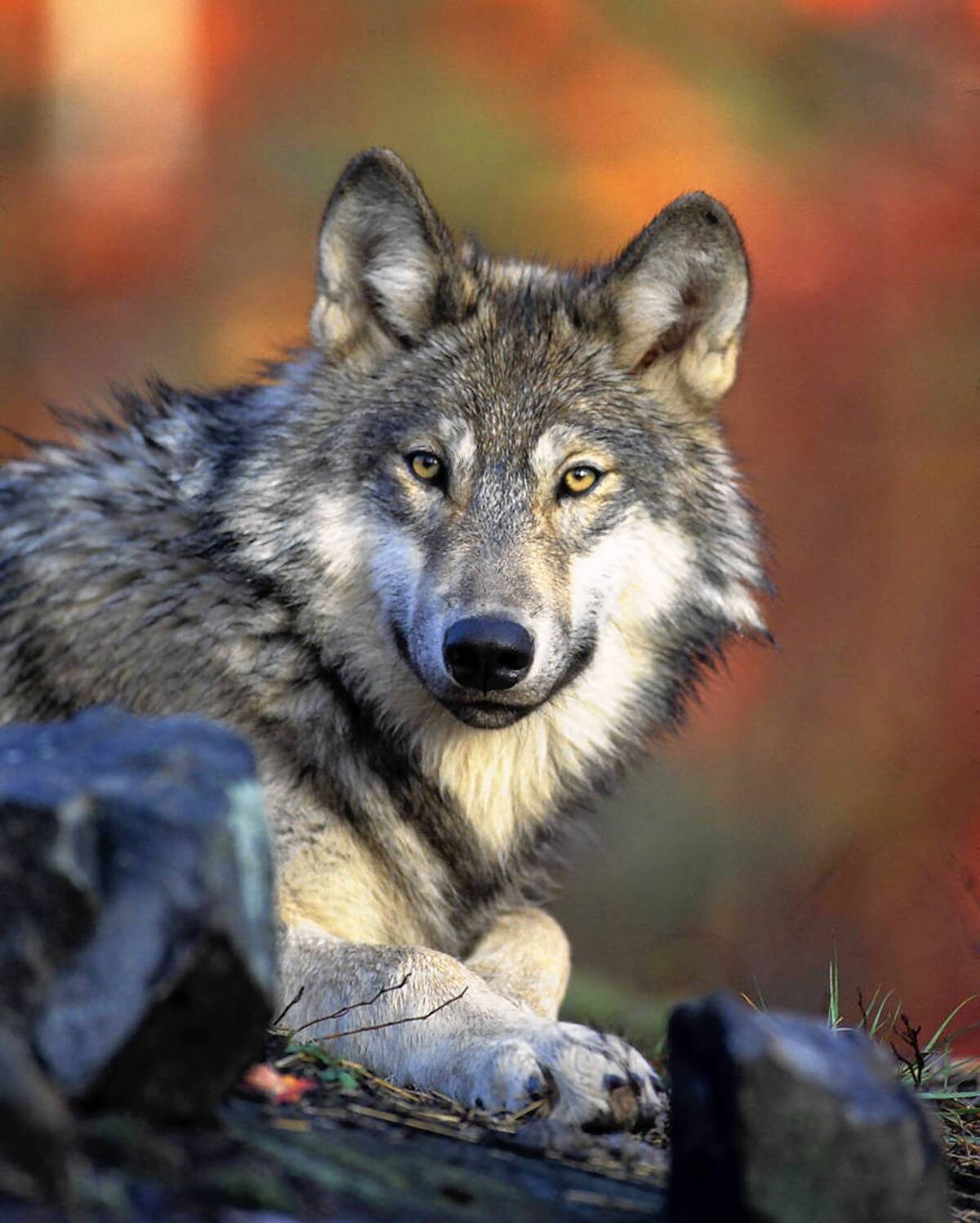U.S. seeks to remove protections for gray wolves

- Share via
Saying that gray wolves are no longer in danger of extinction, the U.S. Fish and Wildlife Service announced plans Friday to remove federal protections for the often-reviled animals nationwide and turn wolf management over to states.
Fish and Wildlife Service Director Daniel Ashe called the species’ comeback “one of the most successful recoveries in the history of wildlife conservation,” a characterization that some conservation groups called overly optimistic given the eagerness of hunters and ranchers to kill wolves.
Wolves, once hunted and poisoned to near-extinction, have now rebounded “from a century-long campaign of human persecution,” Ashe said. About 6,100 wolves exist in established packs in the western Great Lakes and northern Rockies.
But Jamie Rappaport Clark, former director of the Fish and Wildlife Service and now president of Defenders of Wildlife, said she feared that removing protections would lead to open season on wolves.
“We believe strongly that the social intolerance to wolves would obligate the Fish and Wildlife Service to give them cover for awhile longer,” Clark said.
The agency said it would continue protections for the small group of Mexican gray wolves in New Mexico and Arizona, which are considered a distinct subspecies. About 75 of those animals are part of a captive breeding program that has struggled, releasing few animals to the wild.
Removing animals from endangered species protection is not common, and is generally a cause for celebration among conservationists as the move signifies that a species has been pulled back from the brink of extinction. Only two dozen species have ever been removed from the list.
Despite modern-day resistance from ranchers and hunters, wolves have flourished since being reintroduced near Yellowstone National Park 18 years ago. The government ended endangered status for gray wolves in the northern Rockies and Great Lakes regions last year.
The species is only beginning to recover in other areas, such as Oregon and Washington. Friday’s blanket decision would strand those animals, critics say, making them less likely to establish a strong foothold.
The decision “is like kicking a patient out of the hospital when they’re still attached to life support,” said Noah Greenwald of the Center for Biological Diversity.
States that manage wolves can now apply their own hunting rules, or extend state protections, as they see fit.
Wolves are now legally hunted in Montana, Idaho and Wyoming. State and federal biologists monitor pack populations and can reinstate protections if numbers reach levels that officials consider dangerously low.
California is considering imposing its own protections after the discovery of a lone male that wandered into the state’s northern counties from Oregon two years ago. Ashe said he expected to see breeding pairs in Northern California in coming years.
The delisting rule is subject to a 90-day public comment period and will be finalized within a year, officials said.
More to Read
Sign up for Essential California
The most important California stories and recommendations in your inbox every morning.
You may occasionally receive promotional content from the Los Angeles Times.














